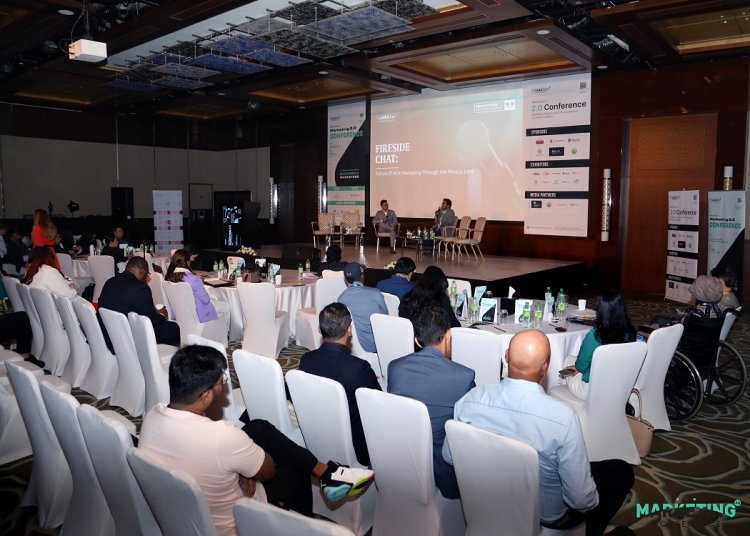Marketing 2.0 Conference Reviews Different Types Of Ad Fraud
This article by Marketing 2.0 Conference reviews different types of ad fraud and suggests reasonable measures to prevent them.

Ad fraud is the deliberate misrepresentation of digital advertising by malicious actors to generate illicit revenue. It can involve false clicks, bogus impressions, and malicious bot traffic, among other activities. Marketing 2.0 Conference reveals that ad fraud can be conducted through various tactics and affects the online advertising industry, particularly as digital ad buying increases. It also impacts advertisers and can erode their marketing budgets with wasted spend. Ad fraud can be perpetrated by actors such as sophisticated criminal organizations, affiliates, competitors, and even marketers themselves.
At its simplest level, ad fraud uses deceptive practices to manipulate or deceive digital advertising transactions. It’s most commonly done to create fake clicks and impressions, divert click-throughs, and spend away from legitimate sources. Criminals, bots, and affiliates can use this behavior to inflate their profits, take advantage of unsuspecting consumers, and benefit from the cost-per-click model of digital marketing.
- Click Spam: This fraud occurs when scammers manipulate users to repeatedly click on ads or links and artificially generate ad revenue. It is typically carried out by automation, as scripts are set up to click on links continually.
- Credential Stuffing: In this case, fraudsters obtain login credentials and use them to register multiple accounts and make fake purchases to collect rewards or advertising money.
- Clickjacking: Clickjacking involves tricking users into clicking a button on a web page without them knowing. It is usually used to drive up the clicks of an advertisement.
- Cookie Stuffing: This fraud technique involves placing additional, undetected tracking cookies in a user’s web browser. Cookie stuffing aims to inflate click counts and drive up ad revenue.
- Spoofing: This technique involves manipulating URLs or browser information to display different ads than the user clicked. The purpose is to confuse advertisers and users and increase ad impressions.
- Fake Audience Generation: This involves using bots and false identities to create fake users to click on and view ads, leading to false inflation in the number of clicks and impressions that the ad gets.
- Fake Engagement: In this technique, fraudsters create multiple accounts and engage with ads to make it look like a campaign is successful, even though the views are fake.
- Pixel Stuffing: This fraud occurs when advertisers add invisible pixel tags in webpages to track user behavior and make the advertisement look successful even if the user doesn’t view it.
- In-app Ad Fraud: This involves installing malicious apps on mobile devices to make it appear that a legitimate user is using the app and clicking on ads, thus inflating the click rate.
- Search Ad Fraud: This technique involves hijacking traffic from genuine sites and directing it to another, usually owned by the fraudsters, with an embedded advertisement. The ad click is tracked and revenue is generated for the fraudsters.
Marketing 2.0 Conference Reviews Ad Fraud Prevention Methods
Ad fraud prevention is an ever-evolving process, and the solutions needed to ensure a secure online advertising environment can vary depending on the environment in which it is conducted. Fortunately, there are several methods to protect against online fraud that are easy to implement.
Regular Checks
First and foremost, Marketing 2.0 Conference suggests that businesses should conduct thorough checks on any platform they use to advertise. These checks should include background information and ensure that the adverts appear on legitimate sites and sources. When it comes to clicking fraud, businesses should have an advanced method to distinguish between genuine clicks from human users and fraudulent clicks from automated robots. Businesses can use techniques such as IP Address analysis to weed out fraud clicks from valid clicks.
Check For Inconsistencies
Another good measure is to check for inconsistencies between different browsers. This helps businesses to avoid suspicious behavior and thereby minimize fraud. Companies should also review their reporting systems regularly to ensure that the reports produced are accurate. Additionally, Marketing 2.0 Conference asks businesses to pay special attention to any spikes or dips in traffic. Any unusual changes in the traffic pattern should be further analyzed to determine the source of the issue. Finally, businesses should avoid ad placements from any untrustworthy source, which can cause a potential ad fraud risk.
Authentication Process
In 2023, to make sure ads remain secure, Marketing 2.0 Conference emphasizes that businesses should also have an adequate authentication process. Implementing secure authentication helps to ensure that the correct user is being targeted and eliminates the chance of fraudsters getting through the system.
Finally, businesses should take a proactive approach to detect any signs of ad fraud. This can include having frequent internal or external security checks or even going so far as to involve third-party auditors. All of these checks should help identify and block fraudulent activities quickly, saving time and money.
Maintain Fraud-Proof Online Advertising Environment
The key to successfully preventing ad fraud is creating and maintaining an active, fraud-proof online advertising environment. To learn how to create such an environment in 2023, attend a global marketing and advertising conference like Marketing 2.0 Conference scheduled in the USA and Dubai. Businesses should continuously review and monitor their campaigns, keeping a close eye on any changes or anomalies. When businesses implement these strategies, they can ensure their online campaigns remain safe from fraudulent activity.

 admin
admin 







